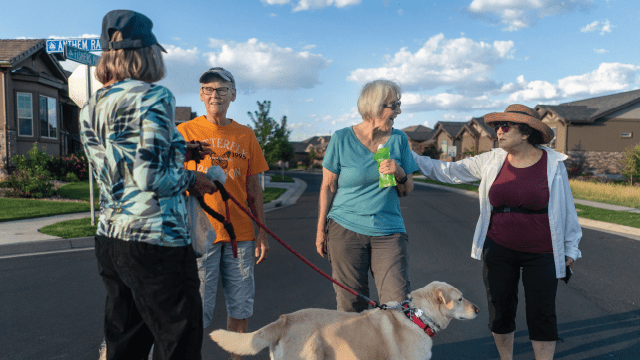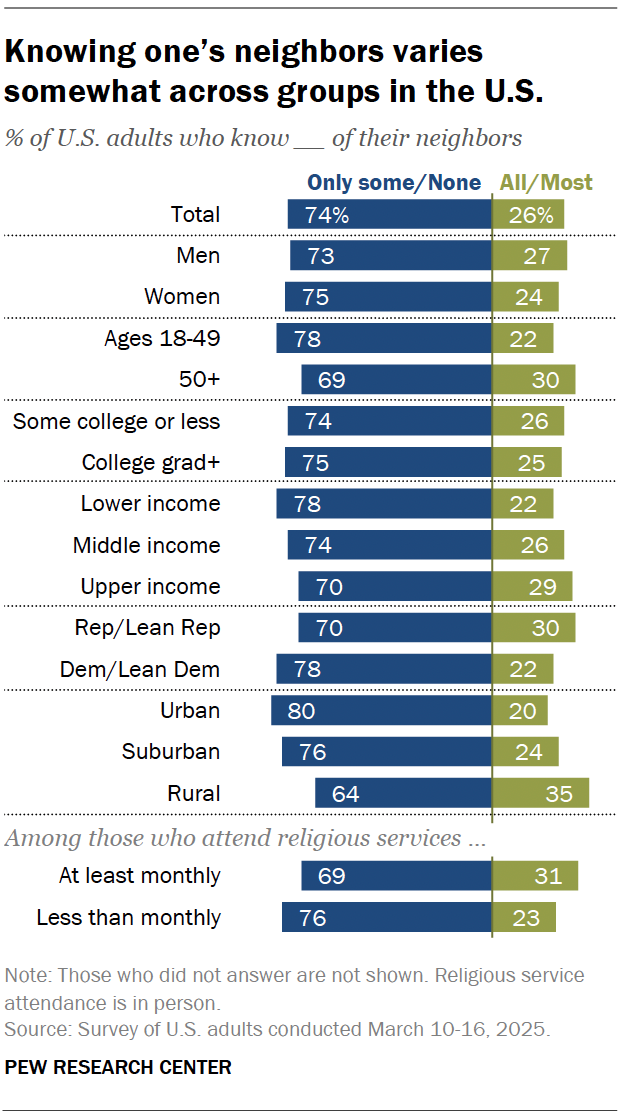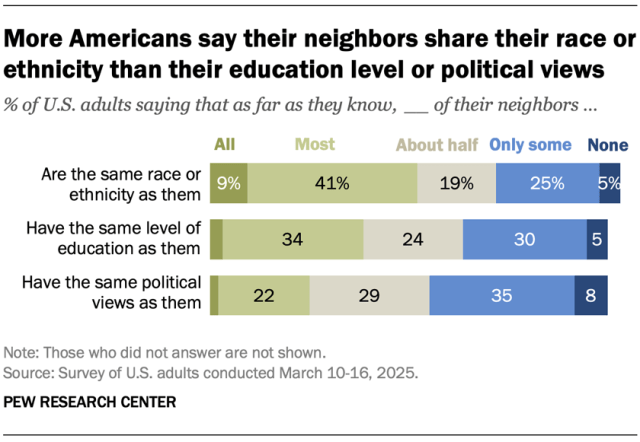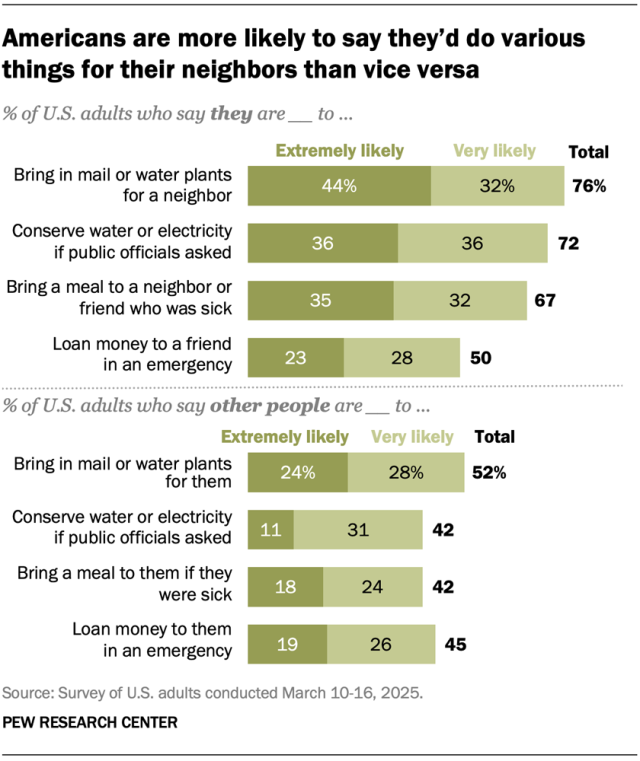
Americans differ over what their ideal community looks like. But wherever they live, most have neighbors, whether they’re sharing a wall in an apartment building or living several miles down the road.
In a March 2025 survey, we asked Americans a series of questions about their neighbors, including whether they know and trust the other people in their neighborhood and how similar they are to them demographically and politically. We also asked people whether they are likely to do things for their neighbors that might build community ties – and whether they think their neighbors would do the same things for them.
What share of Americans know and trust their neighbors?

About a quarter of U.S. adults (26%) say they know all or most of their neighbors. Another 62% know only some of them, and 12% don’t know any of them.
When it comes to trust, 44% of adults say they trust all or most of the people in their neighborhood. Another 46% trust some of the people in their neighborhood, while 9% trust none.
The shares of Americans who say they know and trust their neighbors have both decreased slightly in recent years. In 2018, 31% of Americans said they knew all or most of their neighbors, and 52% said in 2015 that they trusted all or most of their neighbors.
Some groups of Americans are more likely than others both to know all or most of their neighbors and to trust all or most of them:
- Those ages 50 and older
- White Americans
- Upper-income Americans
- People who live in rural or suburban areas
- Those who attend in-person religious services at least monthly
Republicans are also more likely than Democrats to know and trust their neighbors, but these differences are largely related to race and ethnicity, education level and other factors.
Notably, Americans are more likely to trust all or most of their neighbors than to say that, in general, most people can be trusted (44% vs. 34%). And while Republicans are more likely than Democrats to say their neighbors can be trusted, Democrats are more likely than Republicans to say most people can be trusted. (All references to Republicans and Democrats in this analysis include independents who lean toward each party.)
Data essay: Americans’ Trust in One Another
Which traits do Americans share with their neighbors?

Americans say they are more similar to their neighbors in some ways than others:
- Half of adults say all or most of their neighbors are the same race or ethnicity as they are
- 38% say they have about the same level of education as most or all of their neighbors
- 23% say they have the same political views as all or most of their neighbors
Overall, how similar people feel to their neighbors is related to how much they trust their neighbors and whether they have expectations that they and their neighbors will do things for one another.
Would Americans help their neighbors, and vice versa?
We also asked Americans about a variety of neighborly behaviors – some specifically about their neighbors and others more broadly about their friends or local community. These range from interpersonal acts, such as collecting the mail for out-of-town neighbors, to more community-oriented acts, such as conserving water or electricity during a time of emergency.
Most adults (59%) say they have a neighbor they’d feel comfortable asking to keep a set of their keys for emergencies.
Majorities also say it’s extremely or very likely that they would do several other things:

- 76% say they would bring in the mail or water plants for out-of-town neighbors
- 72% say they’d conserve water or electricity if asked to do so by a public official
- 67% say they’d bring a meal to a sick neighbor or friend
However, Americans are considerably less likely to say their neighbors would do several of these things than the other way around:
- 52% of U.S. adults say it’s extremely or very likely that a neighbor would bring in their mail or water their plants if they asked for help while out of town
- 42% say people where they live would conserve water or electricity if public officials asked them to do so because of an emergency
- 42% say a neighbor or friend would bring them a meal if they were sick
Another item in the survey asked about loaning money to a friend in an emergency. Half of Americans say it’s extremely or very likely they would do this, while 45% say it’s likely that a friend would loan them money.
Demographic differences in helping neighbors
In many cases, there are large demographic differences in Americans’ likelihood of doing things for their neighbors (and vice versa). In general, groups that are more likely to say they’d do certain neighborly acts are also more likely to trust their neighbors and to have high expectations of their friends and neighbors.
These groups include:
- Older people
- White Americans
- More affluent people
- More educated people
For example, while majorities in all age groups say they would bring a meal to a neighbor or friend if they were sick, 74% of those ages 50 and older say it’s extremely or very likely they would do so. That compares with 65% of adults 30 to 49 and 55% of those under 30.
Americans with a college degree are about 10 percentage points more likely than those with less education to say they would bring in mail or water the plants for a neighbor (83% vs. 72%) and conserve water or electricity if public officials asked in an emergency (78% vs. 69%).
Note: Here are the questions used for this analysis, the topline and the survey methodology.

